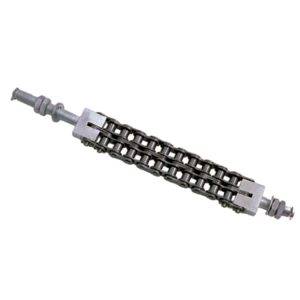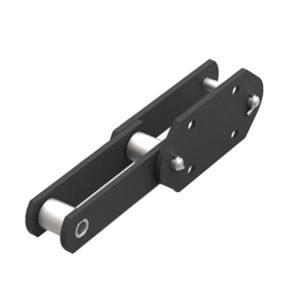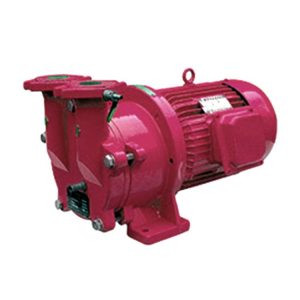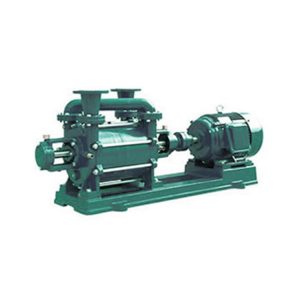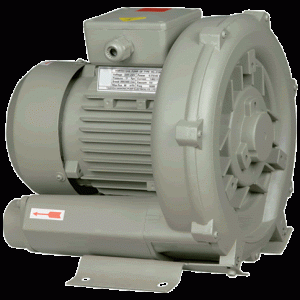Product Description
•Product Description:crankshaft pulley
•Coating: cathode electrophoresis
•Saltfog resistance: 500h
•Size:φ145x40mm
•current Customer: CHINAMFG Export
OEM manufacturing according to customer’s requirement and drawings.
1. factory profile- Xihu (West Lake) Dis.feng Spin
Founded in 2003
Assets: 59 million Yuan
Manufacturing Capacity: 10.0m pcs per year
Employee: 165
Area : 51400m2
Xihu (West Lake) Dis.feng Spin was founded on Sep 1, 2003. It is a professional producing company that specializes in pulley parts in Xihu (West Lake) Dis.feng Group.
Xihu (West Lake) Dis.feng Spin passed TS16949 quality system by the third party in 2005, and passed IATF16949-2016 Certification of Quality Management System for Automobile Production Parts and Related Service Parts Organizations in 2018. In 2015 passed the GB/T280012011/OHsas18001:2007 security, occupational health system certification. GB/T24001-2004/ ISO14001-2004 environmental management system certification.
2. Technique Ability
— We brought in spinning equipments and techniques from Germany in 1993, and mastered the complete set of spinning techniques.
— We have accumulated rich experience in punching, machining, welding, spinning and painting during the long-term production.
— We have 23 technical personnel, and 15 of those taking charge of R&D.
— CAD-Computer-aided design
We apply two-dimensional software (TH-PCCAD &. TH-P3DM, etc.) to develop and design products. Meanwhile, we could provide Pro/E or UG three-dimensional drawing as per customer’s requirement.
— Finite Element Stress Analysis
We apply I-Deas software to analyze press of product.
— Patent
Our factory has a number of patented technology, such as the domestic double molding board spin & Aluminium magnesium alloy spinning technology. Those fill the technology blank.
3. Quality Testing Capacity
4. Production Line
5. Main products
Main products based on different structure
6. Awards from customer
Awarded ” Best 6 Sigma & Continuous
Improvement” by CHINAMFG EA IPO, Awarded
“100% Delivery of Defect free part for 1st &
2ndQuarter “by CMEP,
Awarded “Best Supplier in Corporation”
by BFCEC.
Awarded “Best Continuous Improvement
& Quality Star” by DCEC
7. Certifications
Passed TS 16949 Certificate in 2005, New Version of TS16949
Occupational Health Management System Certification
GB/T28001-2011/OHsas18001:2007
Environmental management system certification
GB/T24001-2004/ISO 14001:2004
Contact us:
HangZhou Xihu (West Lake) Dis. Feng Motor Industry Imp. & Exp. Co., Ltd.
Department 2 (export business)
Mr. Deping LU (Export Director)
Mr. Peng WANG (Project Manager)
/* January 22, 2571 19:08:37 */!function(){function s(e,r){var a,o={};try{e&&e.split(“,”).forEach(function(e,t){e&&(a=e.match(/(.*?):(.*)$/))&&1
| Certification: | ISO |
|---|---|
| Pulley Sizes: | Type C |
| Manufacturing Process: | Casting |
| Material: | Aluminum Aolly, Carbon Steel |
| Surface Treatment: | Electroplating |
| Description: | Crankshaft Pulley |
| Customization: |
Available
| Customized Request |
|---|
How do pulleys affect the performance of fitness equipment?
Pulleys have a significant impact on the performance of fitness equipment by enabling the smooth and efficient operation of various exercise machines. Here’s how pulleys affect the performance of fitness equipment:
1. Resistance Adjustment: Pulleys are often used in fitness equipment to provide adjustable resistance. By incorporating different-sized pulleys or using pulley systems with varying mechanical advantage, the resistance level can be adjusted to meet the user’s desired intensity. This allows individuals to customize their workouts and progress in their fitness journey.
2. Cable Systems: Many fitness machines, such as cable machines and functional trainers, utilize pulleys in their cable systems. These pulleys guide the cables and allow for multi-directional movements, providing a wide range of exercise options. The smooth movement facilitated by pulleys enhances user comfort and ensures consistent resistance throughout the exercise motion.
3. Weight Stacks: Weight stack machines commonly found in gyms employ pulleys to create resistance. The weight stack is connected to the exercise handles or levers through a cable and a series of pulleys. As the user performs the exercise, the pulleys help distribute the load and maintain proper cable tension, resulting in smooth and controlled movements.
4. Functional Training: Pulleys play a crucial role in functional training equipment, such as suspension trainers or resistance bands. These systems often feature adjustable pulleys that allow users to target specific muscle groups and perform a wide variety of functional movements. The pulleys enable smooth and controlled resistance, enhancing overall workout effectiveness.
5. Mechanical Advantage: Pulley systems can provide mechanical advantage in fitness equipment, making exercises more manageable and accessible. By utilizing pulleys with appropriate mechanical advantage, individuals can perform exercises that would otherwise require greater strength or effort. This feature is particularly beneficial for users with varying fitness levels or those recovering from injuries.
6. Smooth and Controlled Motion: Pulleys contribute to the smooth and controlled motion of fitness equipment. By reducing friction and providing proper cable alignment, pulleys ensure that the resistance is applied evenly throughout the exercise range of motion. This promotes fluid and natural movements, minimizing the risk of injury and maximizing the effectiveness of the exercise.
7. Durability and Safety: High-quality pulleys used in fitness equipment are designed to withstand the rigors of constant use and heavy loads. They are often made from durable materials and incorporate features such as sealed bearings to minimize maintenance and maximize safety. Reliable pulley systems contribute to the longevity and safety of fitness equipment.
Overall, pulleys are essential components in fitness equipment, influencing resistance adjustment, cable systems, weight stacks, functional training, mechanical advantage, motion quality, and equipment durability. They enhance the effectiveness, versatility, and user experience of fitness machines, allowing individuals to achieve their fitness goals and maintain an active and healthy lifestyle.
How do pulleys work in garage door openers and winches?
Pulleys play a crucial role in both garage door openers and winches, enabling the smooth and efficient operation of these devices. They provide mechanical advantage, facilitate load lifting and lowering, and contribute to the overall functionality and safety of garage door openers and winches. Here’s how pulleys work in each of these applications:
1. Garage Door Openers:
In a typical garage door opener system, pulleys are used in conjunction with a motor, drive belt or chain, and a set of cables or torsion springs. The pulleys are mounted on the garage door’s torsion bar or header, and the cables or springs are connected to the bottom of the door. Here’s how the pulleys work in a garage door opener:
– Motor and Drive Mechanism: The motor drives a pulley or sprocket, which is connected to a drive belt or chain. As the motor rotates the pulley, the drive belt or chain moves, transferring rotational motion to another pulley or sprocket mounted on the torsion bar.
– Torsion Bar and Cables: The torsion bar, equipped with a pulley, is located above the garage door. The cables are threaded through the pulleys and attached to the bottom of the door on each side. When the motor rotates the torsion bar pulley, the cables move, causing the garage door to open or close.
– Mechanical Advantage: By using pulleys, the garage door opener system creates a mechanical advantage. The arrangement of the pulleys and cables or springs helps distribute the load, making it easier for the motor to lift the heavy garage door. This mechanical advantage reduces the strain on the motor and ensures smooth and controlled movement of the door.
2. Winches:
Pulleys are also integral components of winches used for lifting and pulling heavy loads. Winches consist of a drum or spool around which a cable or rope is wrapped, and pulleys are used to guide and redirect the cable or rope. Here’s how pulleys work in a winch:
– Load Lifting: The cable or rope is wound around the winch drum, and one end is attached to the load to be lifted or pulled. The other end is connected to a fixed point or a secondary pulley system. As the winch drum rotates, the cable or rope is wound or unwound, allowing the load to be lifted or lowered.
– Pulley Systems: Pulleys are used in winches to redirect the cable or rope, providing a mechanical advantage and ensuring smooth movement. Additional pulleys may be employed to create a block and tackle system, further increasing the mechanical advantage and the winch’s lifting capacity.
– Control and Safety: Winches often incorporate braking systems and clutches to control the movement and secure the load. Pulleys play a role in these control mechanisms, helping to regulate the winch’s speed and provide reliable stopping and holding power.
Overall, pulleys are essential components in garage door openers and winches, enabling the smooth and controlled movement of heavy loads. They provide mechanical advantage, facilitate load lifting and lowering, and contribute to the efficiency and safety of these devices.
What materials are typically used to manufacture pulleys?
Pulleys are manufactured using a variety of materials, depending on the specific application and requirements. Here are some of the materials that are typically used to manufacture pulleys:
1. Metal Alloys: Metal alloys such as steel and cast iron are commonly used to manufacture pulleys. Steel pulleys offer excellent strength, durability, and resistance to wear and corrosion. Cast iron pulleys are known for their high strength and resistance to impact and shock loads. Metal alloys are preferred in heavy-duty applications where strength and durability are critical.
2. Aluminum: Aluminum is widely used in pulley manufacturing due to its lightweight nature and corrosion resistance. Aluminum pulleys are commonly used in applications that require reduced weight, such as automotive engines, aircraft components, and light-duty machinery. They offer good strength-to-weight ratio and are suitable for applications where weight reduction is a priority.
3. Plastic: Various types of plastics, including nylon, polyurethane, and high-density polyethylene (HDPE), are used to manufacture pulleys. Plastic pulleys are lightweight, corrosion-resistant, and offer good resistance to wear and abrasion. They are commonly used in applications where noise reduction, chemical resistance, or non-conductive properties are required. Plastic pulleys are frequently used in conveyor systems, packaging machinery, and small-scale equipment.
4. Composite Materials: Composite materials, such as fiberglass-reinforced plastic (FRP) and carbon fiber-reinforced polymer (CFRP), are utilized in the manufacturing of pulleys. These materials offer high strength-to-weight ratios, excellent resistance to corrosion, and good fatigue resistance. Composite pulleys are commonly used in industries such as aerospace, marine, and sports equipment, where lightweight components with exceptional strength are required.
5. Ceramics: In certain specialized applications, pulleys made of ceramics like aluminum oxide (alumina) or silicon nitride are used. Ceramic pulleys offer exceptional hardness, high temperature resistance, and excellent wear resistance. They are primarily used in industries such as semiconductor manufacturing, where extreme precision, chemical resistance, and resistance to high temperatures are crucial.
It’s important to note that the choice of material for pulley manufacturing depends on factors such as load capacity, operating conditions, environmental factors, and cost considerations. Manufacturers select materials that provide the necessary properties to meet the specific requirements of the application while considering factors such as strength, durability, weight, and cost.
editor by CX
2024-03-28











